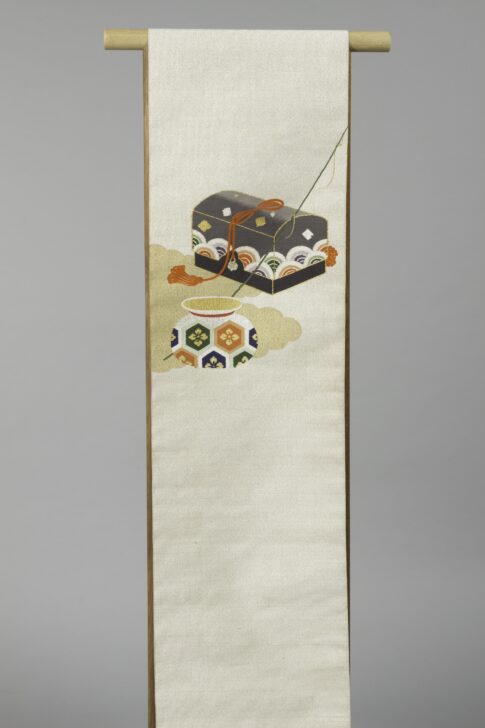Obi
Japanese

Description
Subject Matter:
This is a Nagoya obi in otaiko gara.
Nagoya obi were first produced at the end of the Taisho era, and are shorter than the more formal fukuro and maru obi. A portion of Nagoya obi fabric is folded and stitched in half to make tying easier. Gara refers to the orientation, arrangement, and surface area of the patterns and pertains to a specific trend and obi tying style.
The patterning in the Otaiko gara type is minimal. A few concentrated spots of patterned motif lie on the obi while the rest is left blank. This style was invented during the Edo period (1615-1868) by the female entertainers in Fukugawa, an entertainment district in present-day Tokyo.
Physical Description:
Off-white and gold speckled Nagoya Obi with various interwoven gray gold, gray, orange, and green motifs. The interwoven motifs consist of a gold cloud background on which a treasure box decorated with violet, orange, and green seigaiha (wave crest) motif patterning and a vase decorated with hexagonal orange, green, and navy blue paulownia leaf motif patterning, a fishing rod, and water ripple motifs, and gunbai uchiwa (fan held by sumo wrestler referee) are depicted to possibly narrate the Urashima Tarou tale.
Usage Rights:
If you are interested in using an image for a publication, please visit https://umma.umich.edu/request-image/ for more information and to fill out the online Image Rights and Reproductions Request Form.